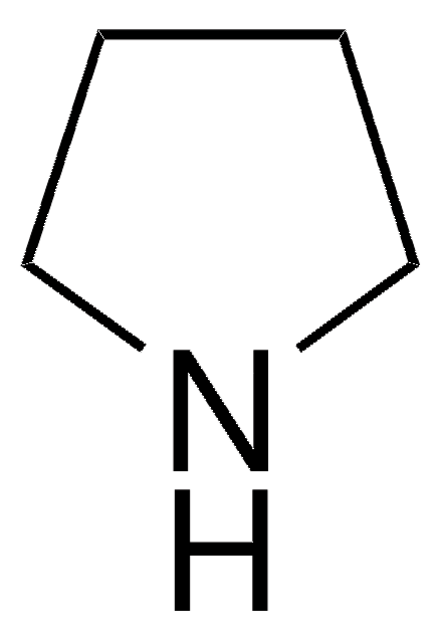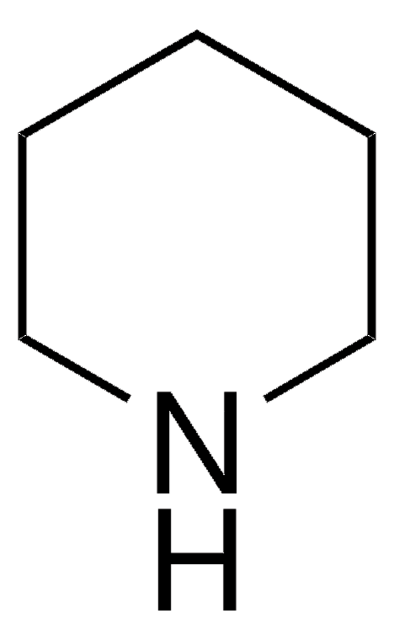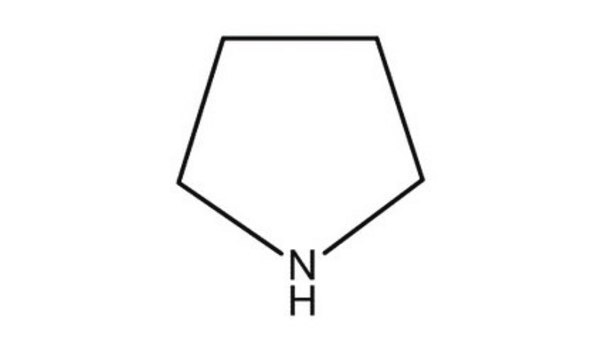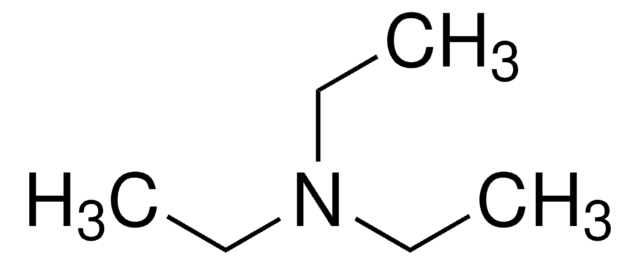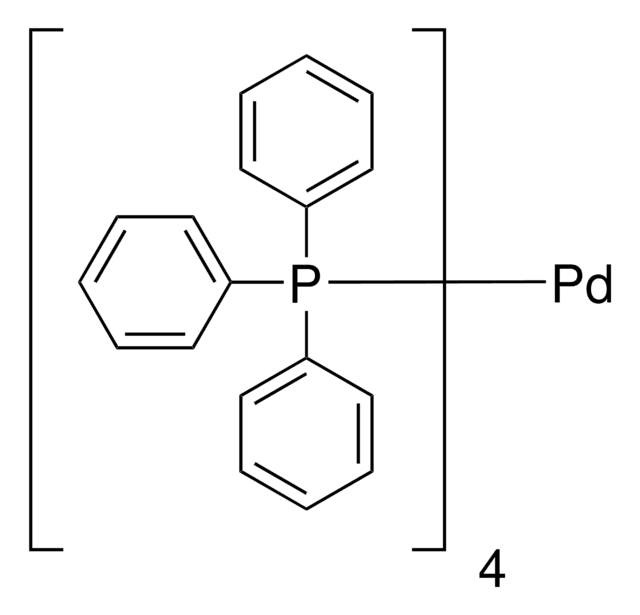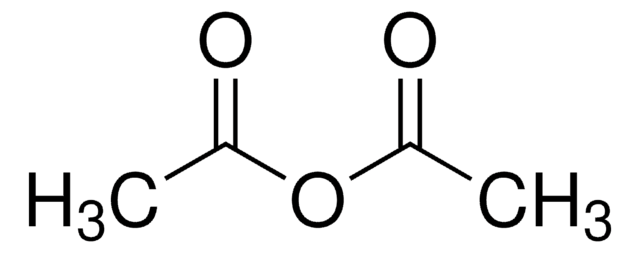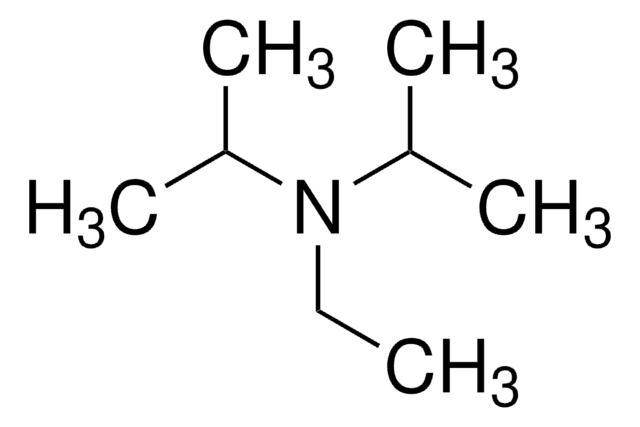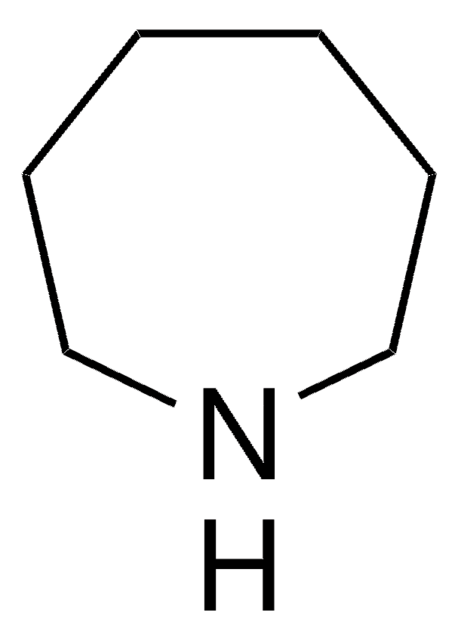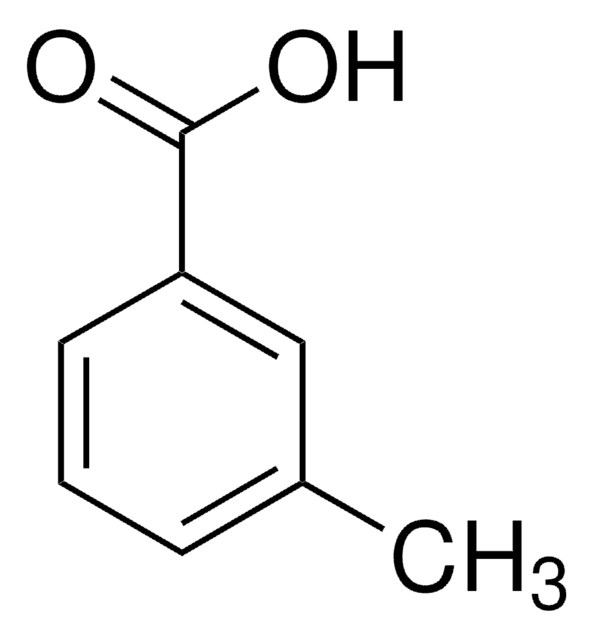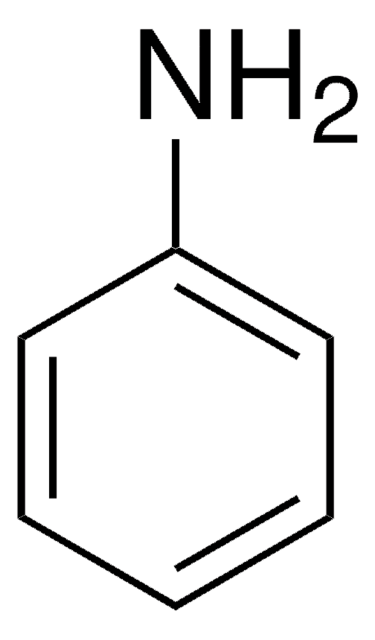394238
Pyrrolidine
≥99.5%, purified by redistillation
Synonym(s):
Tetrahydropyrrole, Tetramethyleneimine
About This Item
Recommended Products
vapor density
2.45 (vs air)
Quality Level
vapor pressure
128 mmHg ( 39 °C)
49 mmHg ( 20 °C)
assay
≥99.5%
form
liquid
autoignition temp.
653 °F
purified by
redistillation
expl. lim.
10.6 %
refractive index
n20/D 1.443 (lit.)
solubility
water: miscible
density
0.852 g/mL at 25 °C (lit.)
SMILES string
C1CCNC1
InChI
1S/C4H9N/c1-2-4-5-3-1/h5H,1-4H2
InChI key
RWRDLPDLKQPQOW-UHFFFAOYSA-N
Looking for similar products? Visit Product Comparison Guide
Related Categories
General description
Application
- Synthesis of pyrrolidine derivatives of pyrimidine.
- As a catalyst in the selective monoallylation of allylic alcohols.
- To capture carbondioxide in a bubble column reactor using pyrrolidine aqueous solutions by gas–liquid absorption.
signalword
Danger
Hazard Classifications
Acute Tox. 4 Inhalation - Acute Tox. 4 Oral - Eye Dam. 1 - Flam. Liq. 2 - Skin Corr. 1A
Storage Class
3 - Flammable liquids
wgk_germany
WGK 1
flash_point_f
37.4 °F - closed cup
flash_point_c
3 °C - closed cup
ppe
Faceshields, Gloves, Goggles, type ABEK (EN14387) respirator filter
Certificates of Analysis (COA)
Search for Certificates of Analysis (COA) by entering the products Lot/Batch Number. Lot and Batch Numbers can be found on a product’s label following the words ‘Lot’ or ‘Batch’.
Already Own This Product?
Find documentation for the products that you have recently purchased in the Document Library.
Customers Also Viewed
Our team of scientists has experience in all areas of research including Life Science, Material Science, Chemical Synthesis, Chromatography, Analytical and many others.
Contact Technical Service